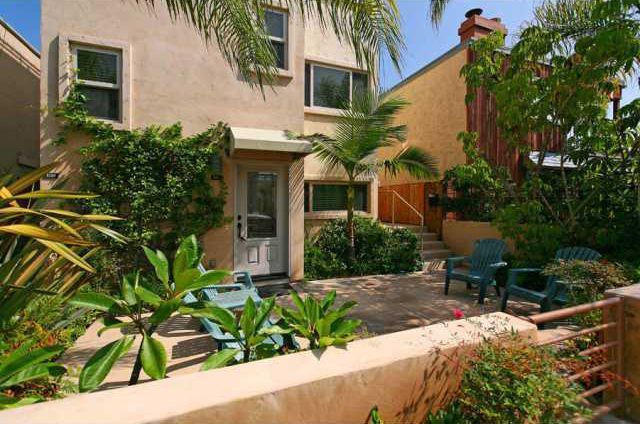Benefits of Renting to Tenants with Pets
One of the main decisions a landlord has to make is whether or not to allow pets.
A landlord needs to decide on the pet policy before renting out the property. The pet policy will state whether or not pets are allowed. If they are, the pet policy will list the types of pets allowed and the required fees.
It will also state the rules and regulations pet owners must follow during their stay in the property. The pet policy should be included in the lease agreement, even if pets aren’t allowed. The tenant should also review the policy before they sign the lease agreement.
Many landlords decide to refuse tenants with pets because it brings various risks to the property. Below are some of the cons of making your property pet-friendly:
1. PROPERTY DAMAGE
For example, pets can chew through doors and carpets. Some can scratch on floors and damage the furniture inside the property. There are indeed some pets that are more behaved than others, but when pets are present, there’s a higher risk of damage.
2. DISTURBANCE TO NEIGHBORS
Pet behavior is hard to predict. Even if they are well-trained, they can still irritate the neighbors. They can make loud noises late at night or may suddenly attack and bite a neighbor for no specific reason.
3. ALLERGENS IN AIR DUCTS AND CARPETS
Allergens from pets can stick to air ducts and carpets for quite a long time. The allergens can remain there even after your tenant moves out.
Once a new tenant moves in, they might experience a severe allergic reaction and decide to look for another rental property.
4. LINGERING ODORS
Accidents can occur when pets are present, producing odors in the property. The smell might not be very obvious at first, but it can be difficult to get rid of, even after the tenant moves out. Additionally, having the property professionally cleaned will not always exterminate the odor.
Even if there are several cons, there are some landlords who chose to make their property pet-friendly. There are several benefits to allowing tenants with pets.
Below are some of the pros when landlords decide to allow tenants with pets:
1. INCREASED TENANT POOL
You’ll enjoy a broader tenant pool if you offer a pet-friendly property. In turn, your chance of finding good and reliable tenants increases. One survey has found that 75% of tenants are pet-owners.
Moreover, the majority of these tenants find it hard to look for a rental property that allows pets. As a landlord, you can choose to be flexible and allow pets in your rental property. Your property listing will be the first one pet-owners respond to if you allow pets.
2. LONGER TENANCY
Tenants who have pets tend to stay in the property longer than those who don’t, as there’s a lower number of pet-friendly properties. The vacancy rate across the nation is decreasing, which means there is a highly competitive market for tenants looking to move. Some tenants who own pets, especially dog-owners, don’t want to stress their pets by frequently moving.
If your property has a high tenant turnover and vacancy, your rental revenue will be negatively affected. Offering a pet-friendly property will mean a lower tenant vacancy. Plus, your tenant will be motivated to renew their lease every year.
3. HIGHER RENTAL INCOME
If there are only a few pet-friendly properties in your neighborhood, tenants will have fewer options. Because of the greater demand, you can charge a slightly higher rent than others.
For example, you can collect a pet fee each month when you accept tenants with pets. A pet fee is different from a pet deposit, which is reserved for repairs for damages pets cause. Pet fees, on the other hand, are added to the rental amount and are non-refundable.
You can earn a higher rental income with the pet fee. For example, a $30 monthly pet fee will give you $360 additional income at the end of the year.
However, before requiring a pet fee or pet deposit, you need to check your local laws. Some states don’t allow landlords to collect a pet fee or pet deposit.
4. PROTECT YOUR PROPERTY
Pet policy will protect your property by requiring tenants to give a pet deposit and get renter’s insurance. Moreover, the pet policy states the rules and regulations regarding the behavior of the pet. When you don’t allow pets, some tenants might sneak in an unauthorized pet without your knowledge.
It’s highly likely that the unauthorized pet will damage your property. It may even harm your tenants or your neighbors. The landlord will also consequently take responsibility when the tenant moves out without bringing their pet.
However, providing a pet-friendly property with conditions will lessen the occurrences of unauthorized pets. You can even require a pet deposit to cover any pet damage if it’s allowed in your state.
There is also an advantage if you collect a high amount for a pet deposit, such as $200. Tenants will be more motivated to avoid pet damage because of the money involved, to be able to get their deposit back when they move out. Whereas if you collect a non-refundable monthly pet fee, your tenant won’t be as eager to prevent pet damage.
5. HIGHER QUALITY TENANTS
If you provide a pet-friendly property, you’ll be able to increase your chances of getting quality tenants.
It’s worth noting that pet owners usually have a higher income, but the reason for this remains unclear. Not only do they have a greater salary, but they also have better financial health. They will be less likely to miss rental payments, and they won’t move out without paying rent.
Aside from this, pet owners tend to be more mature and responsible than those who don’t own pets. They also tend to be happier tenants because their pets help reduce their stress.
There are some real risks involved when you accept tenants who have pets. However, there are also numerous benefits to renting out your property to tenants with pets.
As a landlord, you need to study all the pros and cons of allowing pets in your property. Afterward, you can decide which is the best option for your rental business.
Posted in Uncategorized















